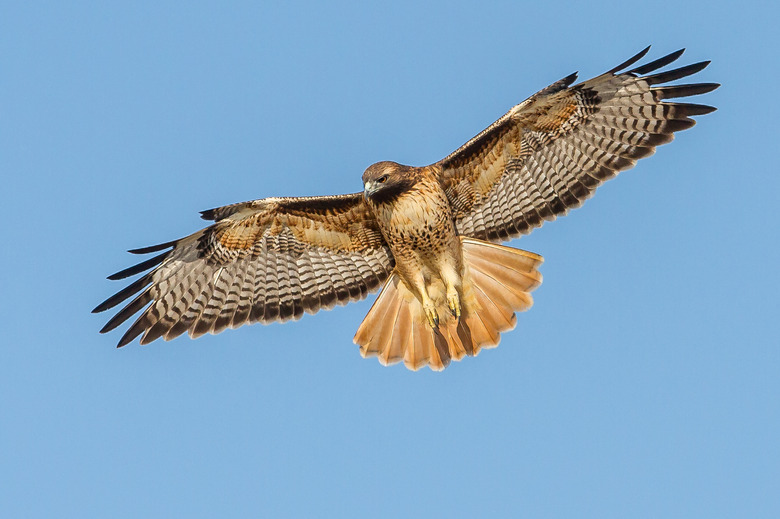Adaptations Of The Red-Tailed Hawk
The red-tailed hawk's scientific name is Buteo jamaicensis. According to National Geographic, the red-tailed hawk is the most common hawk in North America and can be found throughout Central America and on the islands of the West Indies. This bird of prey ranges as far north as Alaska and northern Canada, and south to the mountains of Panama.
Habitat Adaptations
Habitat Adaptations
Red-tailed hawks have adapted to survive in a wide variety of habitats, climates and altitudes, from deserts to mountains to tropical rain forests. They have also adapted well to human constructions. Red-tailed hawks often use telephone poles to scout for prey along roadsides. Fence posts are another favorite perch.
Physical Adaptations
Physical Adaptations
These birds are among the largest raptors in the world. They have a wingspan of about 4 feet and can weigh up to 4 lbs. This large size gives them the strength and bulk necessary to catch prey that smaller raptors could not handle.
Hunting Adaptations
Hunting Adaptations
Red-tailed hawks have keen eyesight and can spot prey from great distances. They prefer hunting in open areas where prey cannot hide from their superior vision. The birds often soar in wide circles over fields in search of food. Unlike the quick dive of a falcon, red-tailed hawks dive in a slower controlled way once prey has been located. For the most part, these birds are adapted to hunt for small mammals such as mice, squirrels and rabbits. Other prey items may include lizards, frogs, snakes, fish, bats and smaller bird species.
Nesting Adaptations
Nesting Adaptations
These raptors have adapted to building nests made out of sticks high in the air. This reduces the exposure of the eggs and chicks to predation. According to Animal Diversity Web, "The female is usually the more aggressive partner around the nest itself, whereas the male more aggressively defends the territory boundaries." Egg incubation is four to five weeks. Young are fed by the parents from the time they hatch until they leave the nest about six weeks later.
Cite This Article
MLA
Fielder, Dan. "Adaptations Of The Red-Tailed Hawk" sciencing.com, https://www.sciencing.com/adaptations-redtailed-hawk-8651668/. 22 November 2019.
APA
Fielder, Dan. (2019, November 22). Adaptations Of The Red-Tailed Hawk. sciencing.com. Retrieved from https://www.sciencing.com/adaptations-redtailed-hawk-8651668/
Chicago
Fielder, Dan. Adaptations Of The Red-Tailed Hawk last modified March 24, 2022. https://www.sciencing.com/adaptations-redtailed-hawk-8651668/
